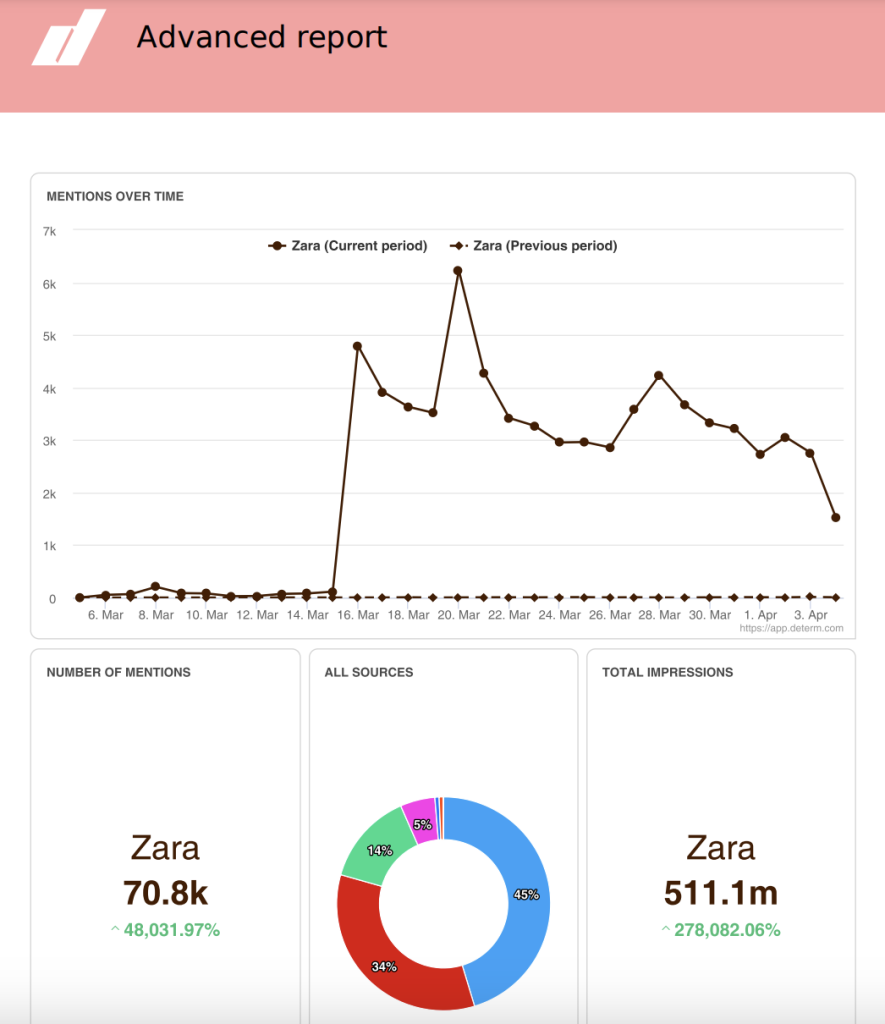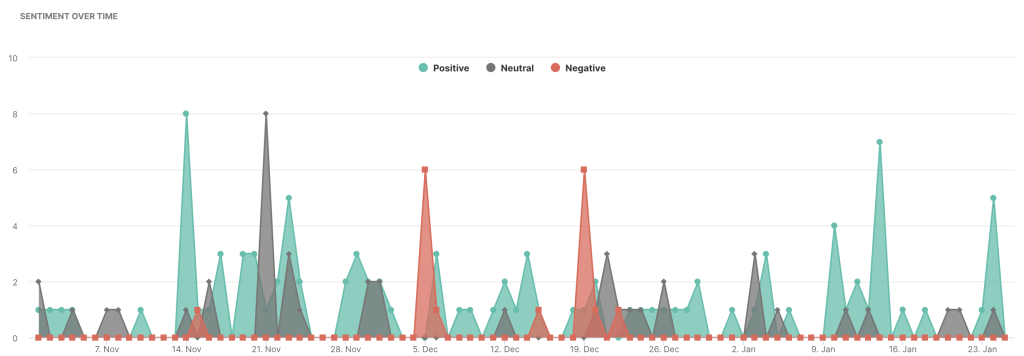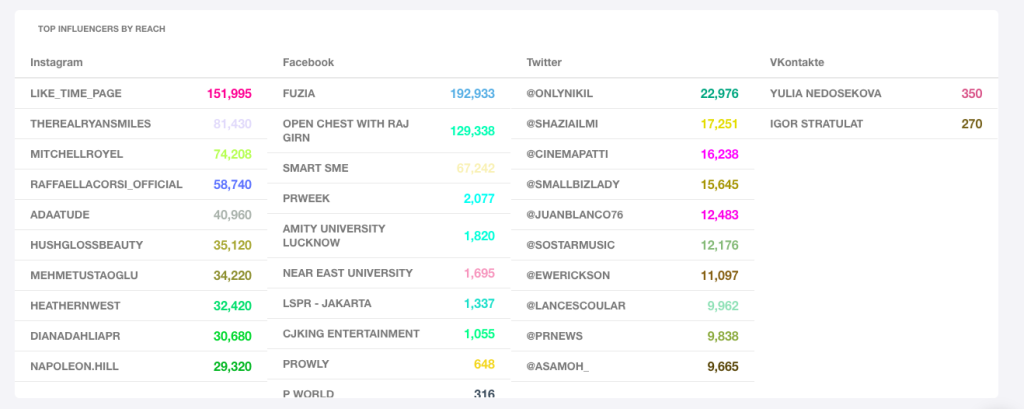To start with a huge disclaimer: No, we don’t think cutting budgets for PR will make your company grow. What we do think is that many of you don’t have an influence over how much budget you get for your PR efforts. Or maybe you do get a say. Whatever the case, we think the amount you get can be effectively optimized or even boosted by using a media monitoring tool.
💡 Read Digital PR Explained: Best Strategies and Tools
Let’s start with some basics and see what some of the things your PR budget goes to are.
PR Budget Plan – a Quick Overview
While your PR budget split may differ depending on the industry you’re based in, here are some of the things you may be spending your money on:
- Press conferences
- Media events
- Crisis management
- Media monitoring/press clipping
- Memberships
- Content production and distribution
- PR and market research
- Influencer and journalist databases
- Staff (if done in-house)
Your budget breakdown may look completely different and may not include most of these things, but we’re keeping things general to fit most scenarios.
Agency or in-house?
There are different approaches to handling your company’s PR, whether you decide to outsource the work or do it in-house.
Hiring an agency can definitely give you an advantage in terms of productivity and ease since they provide access to expertise and can do most PR activities for you. Depending on your needs, you can also hire an agency specializing only in one activity (e.g., crisis, public affairs,…).
Have in mind that, while often very organized and productive, agencies can be very expensive and also busy. Their schedules can get crazy, and you might find yourself in a situation where your brand does not get the attention it deserves.
Read: What does a PR agency do

On the other hand, having an internal PR team gives you a sense of control. You can easily access everything you need and get those tasks prioritized and done on time. This can often be more expensive than an agency, depending on the number of people you need for certain activities.
Sometimes, depending on your resources, you can do both, but neither will really save you any coins; one will just fit within your strategy or organization better. Something that might give your budget a break or even help you get more of it by showing accurate results from your PR efforts is a media monitoring tool.
What Can a Media Monitoring Tool Do?
One thing is for sure – the PR world has gone digital, and using all kinds of tools and software has become a must. A media monitoring tool can give you valuable insights about your brand, competitors, or industry trends. It can even save you from an upcoming crisis!
Here are 5 things a media monitoring tool can help you with:
1. Create PR reports
Your reports are a crucial part of the overall analysis of your PR efforts. You want them to cover all the important stuff and to look nice. With a media monitoring tool like Determ, you can automate the process of creating reports.
Whether you need a branded report, or a Competitive analysis, simple or complex, the tool has all the features you need. You can have your data ready in a couple of minutes. The best part of reports in Determ is all the relevant metrics you have on display that prove your PR effectiveness.

Read 5 PR Report Templates and Hacks to Instantly Prove the Value of Your Work
2. Track press releases
If you find yourself googling and manually searching for your press release after you send it to a journalist from your press list, stop yourself now! A good media monitoring tool will track your brand’s mentions in real-time, so you don’t have to lift a finger. Determ has the option of turning on Alerts that keep you aware of any time your press release is mentioned.
It is a very simple process; the tool is keyword-based, so you just enter the name of your press release or your client’s name. Voila, you have all the mentions of your press release in one place.
3. Do market research
Doing market research can sometimes be exhausting, time-consuming, and expensive – especially if you use old-school methods like focus groups, surveys, and interviews.
Media monitoring is cheaper and gives you unbiased and unfiltered data collected in real-time. Also, you are able to monitor your customers in their natural surroundings, whether they are commenting about you on social media, sharing posts, or writing online articles.
4. Manage crisis
Your PR crisis management heavily relies on research and a good and structured communications plan. Your overall saving grace will depend on your strong brand image and your familiarity with your target audience and industry trends.
You can get all of this data from a quality media monitoring tool like Determ. You might not be able to avoid crises; they will always happen, but what you can do is prepare a plan ahead.
Read Four Crisis Management Steps to Take to Stop a Disaster

5. Boost your communication strategy
There are a few components to take care of with your communication strategy. While a media monitoring tool cannot help you with writing and messaging, it can help you choose the right channels and audiences to communicate to.
A media monitoring tool can tell you about your brand’s sentiment, how often, where, and who mentioned it. It also gives you insights into the main trends used by your competitors or your industry in general. Another useful thing is finding the right journalists and influencers or the right locations and languages for your campaigns. All of this (and much more) can be done with the right tool, and one of them is Determ.
Read How to Use Media Monitoring to Boost Your Communication Strategy
How Does any of This Save You Money?
A million-dollar question. Or maybe not a million, but we’ll list the things you can save on or profit from so you do the math afterward.
Testing becomes less necessary
Sounds contradictory, having in mind the fast digital surrounding we live in, but a media monitoring tool does this for you. You can easily track any type of content from your competitors and industry and see what people like most.
You can also collect accurate data about what channels your audience spends the most time on, where they are located and what languages they speak. This way, you can focus your PR budget on something else.

Free influencer and journalist database
A tool like Determ tracks more than 100 million online sources in real-time. That means you’ll get all kinds of information from blogs, social media posts, TikTok mentions, Twitter hashtags, and much more. A media monitoring tool’s feed is a literal gold mine for finding influencers. PR specialists rarely use this feature, so you would have a great advantage.
You can find quality influencers or journalists mentioning your brand, competitors, or industry. You can get their reach, engagement, and number of followers through a simple report that you create and export in minutes. This saves money on those specialized influencer-finding tools.

Never lose to a crisis
A PR crisis can cause you to lose both your brand reputation and budget. As we mentioned, a media monitoring tool will keep you informed every step of the way, and alert you if anything suspicious happens. With a good sentiment analysis and alerting system, you don’t have to be paranoid that your brand will unexpectedly be called out or canceled. You’ll know when the buzz is starting to happen, and you’ll be able to tame the progress trajectory.
This also means you don’t have to rely on an agency or a person to be your alerting system and track what is happening. The only thing you need is a good game plan for what happens after.
Focus on the things you can’t cover
As you hopefully see now, a media monitoring tool can really help you with some important PR activities. If a single tool can do your mention tracking, market research, reporting, crisis management, influencer finding, and more, this means you don’t need an agency or additional people to do all of this work.
This way, you can get one of those specialized agencies to do the thing a tool cannot or have a smaller in-house team instead. A tool cannot truly replace a human, but it can help you achieve those goals without overspending your PR budget.
Read Productivity in PR: Benefits, Tips, Best Tools & Books
Get more for less
We are firm believers that PR is not something to save on, but sometimes it is hard to prove how effective it is. The AVE metric often causes issues with its questionable validity, which is still often used in the PR climate. This stops with a tool like Determ.
It has a significant amount of predefined metrics, and you have the option to create about 2000 more custom ones and use them in the reports. You should opt out for a tool like this to really show the effect your work has. With its metrics and reports, you can easily show the progress you made and how it positively impacts the business goals. This should get the authorities to invest more in the amazing stuff you’re doing. In the end, Determ can get you more budget for less investment due to the things we previously listed.
Start Optimizing Budgets
The Cambridge dictionary definition for optimization says it’s “the act of making something as good and effective as possible”. Your PR budget can really be good and effective with a little help. Even if you have all the money in the world or working on a tight budget, there’s something to optimize, and it can be done with a media monitoring tool.
We hope you did the math, and if you’re willing to try all the features that can help optimize your budget, book a call with us and we’ll show you around.